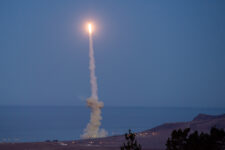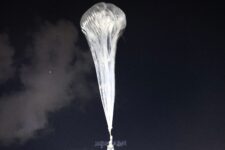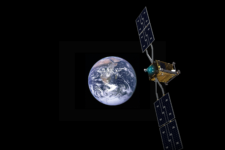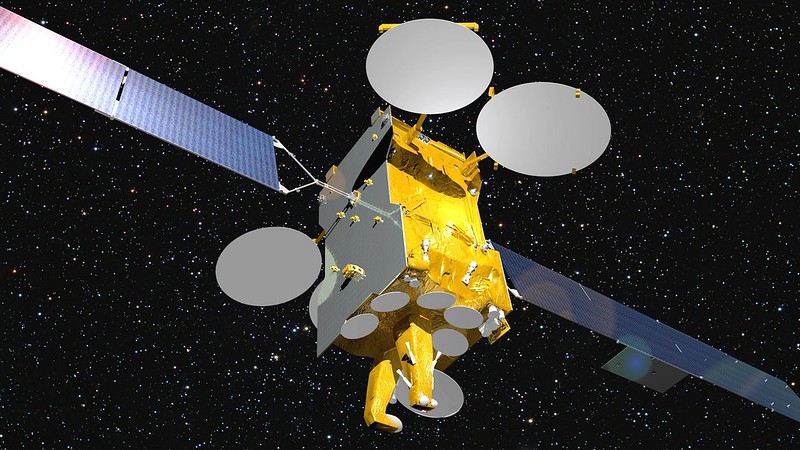
Russia’s second Luch/Olymp launched earlier this year has been spotted hanging out near Eutelsat 3B, which provides communications to Europe, Africa, the Middle East, Central Asia and South America. (Artist’s rendering of Eutelsat 3B: Eutelsat.)
WASHINGTON — Much like its predecessor launched nearly a decade ago, Russia’s second Luch/Olymp satellite is stalking Western satellites across geosynchronous Earth orbit (GEO), according to private sector space watchers.
According to data gathered by California startup Slingshot Aerospace, the satellite known as Luch-5X or Olymp-K-2 [Norad ID 55841] began moving east to west shortly after its launch on March 12 — in what company officials told Breaking Defense on Oct. 6 shows a “pattern of life” that includes making stops nearby non-Russian satellites.
The confusing naming convention for the two Russian rendezvous and proximity operations (RPO) satellites is due to the secrecy surrounding them. Russia’s primary Luch constellation is a set of data relay satellites in GEO, and that name was initially used when the first “inspector” was launched in 2014; it later was tagged as Olymp.
Slingshot used its own network of ground-based telescopes, as well as monitoring data provided by US Space Command and other sources, then applied its software based analytical tools to predict Luch/Olymp’s likely pathway and visits to targets along its way, the officials explained. They then compared their predictions to the satellite’s actual movements, and were pleased to see that their predictions were accurate.
“We predicted where we thought it would stop, and lo and behold, it did actually stop there,” said Audrey Schaffer, the company’s vice president for strategy and policy.
Slingshot’s analysis didn’t show any super-close approaches that would trigger a potential collision warning from US Space Command’s 18th Space Defense Squadron — the closest the new Luch/Olymp came to another satellite was approximately 16 kilometers (almost 10 miles). Most satellite operators don’t get truly nervous about a potential crash until predicted miss distances are under 10 kilometers (about 6 miles).
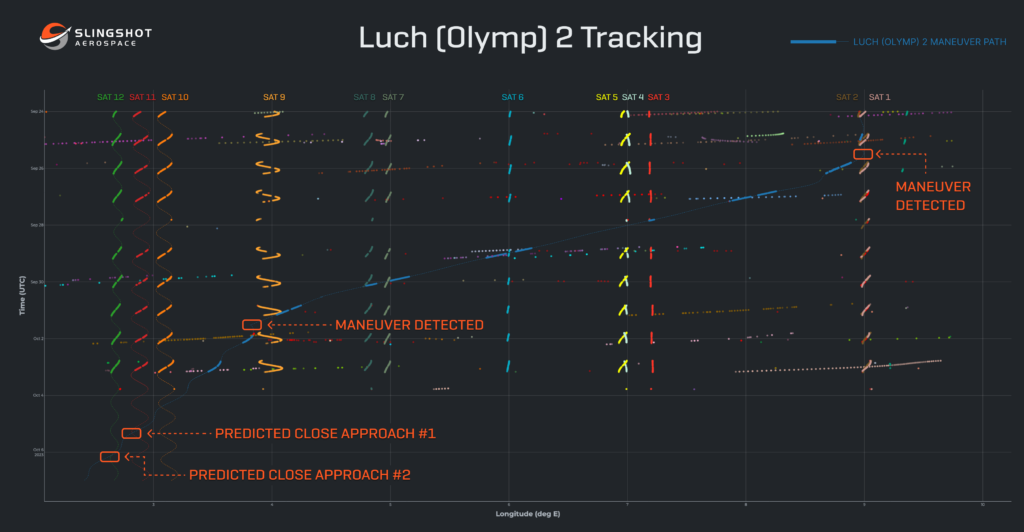
Slingshot Aerospace used its telescopes, other monitoring data, and its software-based visualization platform to analyze the new Luch/Olymp satellites on-orbit movements after its launch in March. The graphic is read from right to left.
“But nonetheless, what you’re seeing is behavior that could be considered unfriendly,” said Schaffer, who until recently served as the director of space policy at the National Security Council.
And while Schaffer didn’t address the issue, it also stands to reason that the latest version of what Moscow calls an “inspector” satellite — and the West calls a signals intelligence satellite — would have better sensors onboard that would allow it to see more from slightly farther afield.
The first Luch/Olymp caused much wailing and gnashing of teeth among Pentagon and allied defense ministry officials about the threat it posed, and not just because it at one point in 2015 came within five kilometers of an Intelsat satellite. It would not be unreasonable to assume that the recent push by US Space Command to develop capabilities to allow satellites to move more rapidly and more often is in part spurred by a desire to stay clear of adversary RPO birds such as Luch/Olymp.
Slingshot’s analysis didn’t identify what satellites the new Luch/Olymp was monitoring, but company officials said they were all commercially owned.
However, another data visualization startup, DigitalArsenal.io, has used its OrbPro open-source-based software platform to track the new Luch/Olymp hanging out in an orbit close to a Eutelsat communications satellite covering Europe, Africa, the Middle East, Central Asia and South America. TJ Koury, the company’s CEO, on Oct. 15 posted a video on LinkedIn that showed the Russian spy-sat coming as close as about 18 kilometers (11 miles) to Eutelsat 3B.










